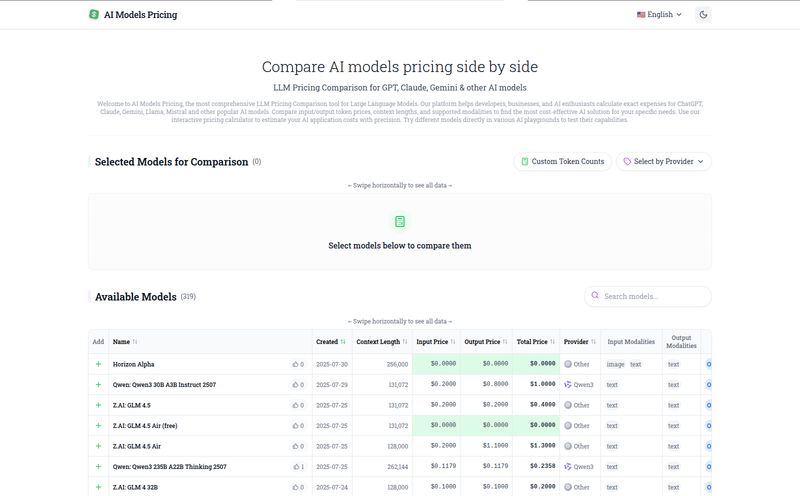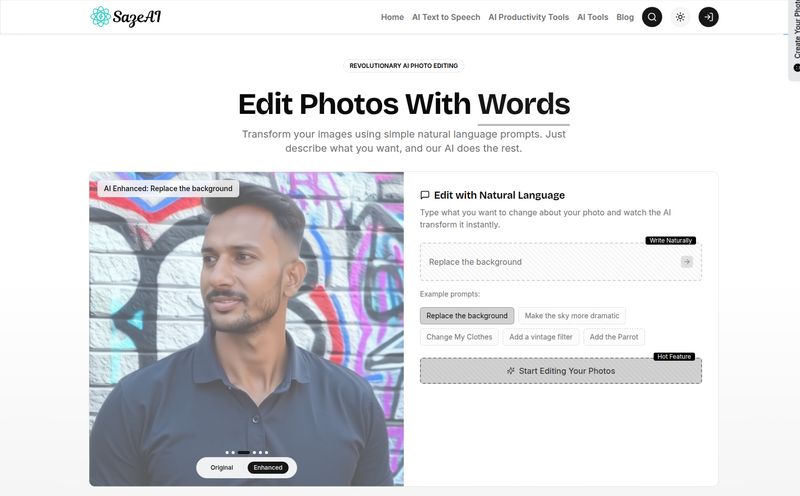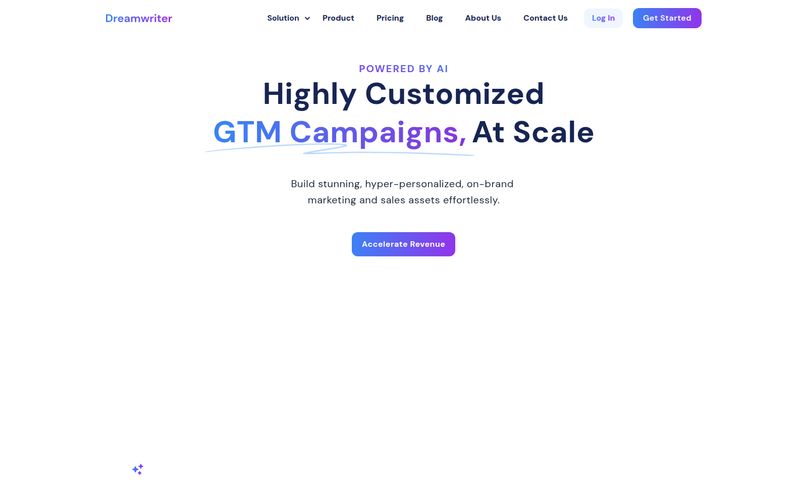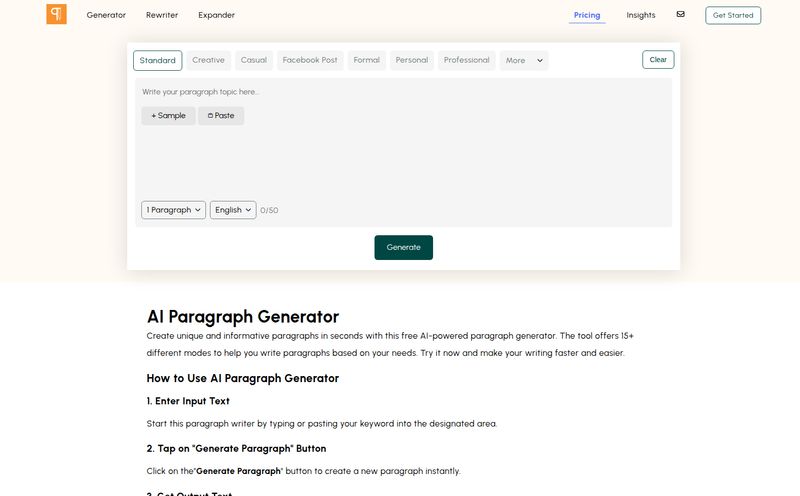As an SEO who’s been in the trenches for years, my inbox—and my credit card statement—is overflowing with AI tools. Every week there’s a new “game-changer” with a slick landing page and a recurring monthly subscription that makes my wallet weep. It feels like we're all paying for these massive, all-you-can-eat AI buffets when sometimes, all we really need is a quick, well-made sandwich.
It’s exhausting. And expensive.
So when I stumbled upon WordWield, I was immediately skeptical. The headline? “Free AI article and blog post writer.” Yeah, right. I’ve seen “free” before. It usually means 500 words a month and an interface plastered with more ads than a NASCAR driver’s jacket. But this one seemed… different. Its whole model is built around using your own OpenAI API key. Now that got my attention. It's like a 'bring your own bottle' party, but for content generation. I had to see what was up.
So What Exactly is WordWield?
Let's get this out of the way first. WordWield isn't another AI company trying to build the next Jasper. It’s not trying to be a massive, all-in-one platform. In the simplest terms, WordWield is a clean, straightforward interface that you plug your own OpenAI API key into. That's it. It’s a specialized tool designed to do one thing and do it well: generate a full-length blog post based on your instructions.
You don't pay WordWield a dime. No subscription. No credits. No tiers. You just pay for whatever you use directly from your OpenAI account. It’s a brilliantly simple concept. They provide the slick dashboard and the structured prompts, and you provide teh engine—your GPT-3.5 or GPT-4 access.

Visit WordWield
The BYO-API Key Model is a Breath of Fresh Air
This “Bring-Your-Own-API” model is, for me, the biggest selling point. Why? Because it puts the power (and the cost control) back in our hands. For too long, we’ve been at the mercy of SaaS pricing that often feels arbitrary. Some tools charge a hefty markup on the raw cost of GPT calls, and you're left guessing how much you're really paying for the AI versus their software wrapper.
With WordWield, there's total transparency. I can log into my OpenAI dashboard and see my usage down to the fraction of a cent. If I don't write anything for a month, my bill is zero. If I have a heavy content month, I pay for exactly what I used. No more paying a $99 monthly fee for a tool I only used twice. This is a model that respects the user, especially the freelancers and small agency owners among us who live and die by our monthly overheads.
Getting Started with WordWield
I was expecting some kind of convoluted setup, but it was surprisingly painless. You literally just grab your API key from your OpenAI account (if you don’t have one, it’s easy to set up), and paste it into the field on WordWield. Done.
From there, the interface is dead simple:
- Article Topic: The main subject of your post.
- Keywords: Your target and semantic keywords.
- Writing Style: You can choose from options like Professional, Friendly, Witty, etc.
- Point of View: First person, third person, you get the idea.
- Number of Sections: Tell it how to structure the article.
- GPT Model: Choose between the faster, cheaper GPT-3.5-Turbo or the slower, smarter, and pricier GPT-4.
I ran a few tests. For a quick listicle, GPT-3.5 was perfectly fine and generated the article in under a minute. For a more nuanced topic that required a bit more reasoning, I switched to GPT-4. The difference in quality was noticeable, as was the generation time and cost, but that’s the trade-off we all know and love. The ability to make that choice on a per-article basis is fantastic.
The Good, The Bad, and The Quirky
No tool is perfect, right? Here’s my honest breakdown after putting it through its paces.
The Things I Absolutely Loved
The cost model is the clear winner. I can’t stress this enough. It feels liberating. Beyond that, I appreciate its minimalist approach. There’s no feature bloat, no distracting add-ons, no constant upselling. It's an AI writer for people who just want to write. The interface is clean and intuitive. Also, having direct access to both GPT-3.5 and GPT-4 without an intermediary’s restrictions is a huge plus. You’re getting the raw power of OpenAI’s latest models.
Some Potential Drawbacks to Consider
First off, the need for an API key might be a small hurdle for someone completely new to the AI space. It's not as simple as signing up with Google. You have to go to OpenAI, create an account, generate a key, and set up billing. It’s not hard, but it’s an extra step. Second, the old saying garbage in, garbage out has never been more true. Because WordWield is a direct conduit to GPT, the quality of your article depends almost entirely on the quality of your topic and keyword inputs. It's not going to hold your hand with SEO suggestions or SERP analysis like a more robust platform like SurferSEO would.
And I did notice a funny little quirk. I’d occasionally ask for an article with 5 sections and it would deliver a beautiful piece with 6. It's a minor thing, and classic GPT behavior really. The AI has its own creative spirit, I guess. It’s easy enough to edit, but worth mentioning.
Who Should Be Using WordWield?
After playing around with it for a while, I have a pretty clear idea of who would get the most out of this tool.
This is a perfect fit for:
- Experienced SEOs & Bloggers: If you already have an OpenAI key and you're tired of subscription fatigue, this is a no-brainer. It slots right into your workflow.
- Content Creators on a Budget: If you write sporadically and can't justify a fixed monthly cost, the pay-as-you-go model is a financial lifesaver.
- Agencies Testing the Waters: It's a great, low-cost way to generate first drafts for clients without committing to another expensive software license.
This might NOT be the best fit for:
- Absolute Beginners: Someone who wants a lot of hand-holding, tutorials, and integrated research tools might feel a bit lost.
- Large Teams: It lacks collaboration features, user management, and shared workspaces that big organizations need.
Think of it this way: subscription-based AI writers are like a full-service restaurant with a big menu and attentive waiters. WordWield is like an amazing food truck. The menu is small, you serve yourself, but the food is top-notch and you're not paying for the fancy tablecloths.
My Final Verdict
I’m genuinely impressed with WordWield. It’s a bold move to go against the grain of the SaaS subscription model, and I think it pays off. It's a lean, efficient, and honest tool that does exactly what it promises. It democratizes access to high-quality AI article generation by stripping away the unnecessary costs and complexities.
Will it replace my entire content toolkit? No. But has it earned a permanent spot in my bookmarks for generating solid first drafts quickly and cheaply? Absolutely. It’s a fantastic utility for the modern SEO and content creator. In a world of bloated software, WordWield is a welcome dose of powerful simplicity.
Frequently Asked Questions (FAQ)
Is WordWield really free to use?
Yes, the WordWield tool itself is 100% free. There are no subscriptions or payments made to them. You only pay for what you use via your personal OpenAI API account, based on their standard pay-as-you-go rates.
Do I need a ChatGPT Plus subscription for this?
No. A ChatGPT Plus subscription is for using the consumer-facing chatbot. WordWield requires an OpenAI API key, which is a separate product from OpenAI used for building applications. You can get an API key without a Plus subscription.
Which model should I use, GPT-3.5 or GPT-4?
It's a trade-off. GPT-3.5-Turbo is much faster and significantly cheaper, making it great for simpler articles, brainstorming, or when you need content in a hurry. GPT-4 is more powerful, creative, and better at reasoning, but it's slower and costs more per use. I'd recommend using GPT-4 for your most important, pillar content.
Is the content generated by WordWield SEO-friendly?
The content is a draft. It's as SEO-friendly as the keywords and topic you provide. It won't automatically optimize for SERP features or keyword density. Best practice is always to take the AI-generated draft, fact-check it, inject your own expertise and voice, and then optimize it like you would any other piece of content.
Can I use the articles for my business blog or clients?
Yes. According to OpenAI's terms of service, you own the output you create from their API. You can use it for commercial purposes, including for your own business or for client work.
How is this different from just using the OpenAI Playground?
The Playground is a general-purpose interface. WordWield is specifically structured for long-form article generation. It sends a series of coordinated, fine-tuned prompts to the API to generate a title, introduction, and multiple body sections in one go, which is more complex and time-consuming to do manually in the Playground.
Reference and Sources
- WordWield Official Website
- OpenAI API Pricing
- Guide to Getting an OpenAI API Key (from How-To Geek)



